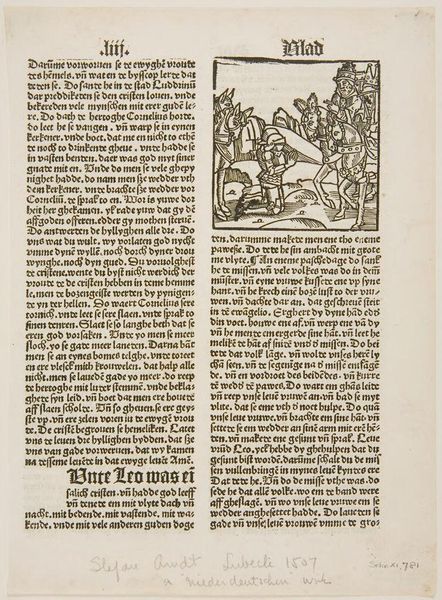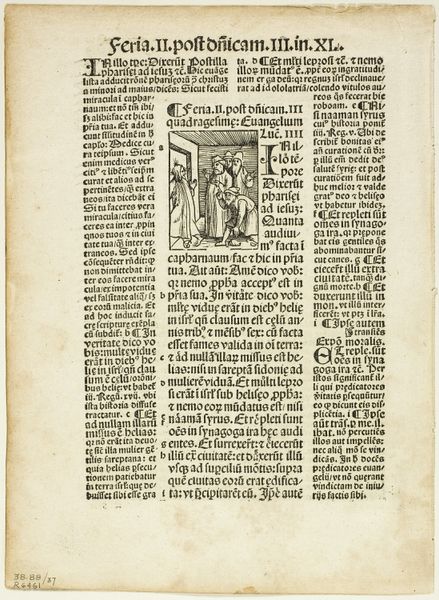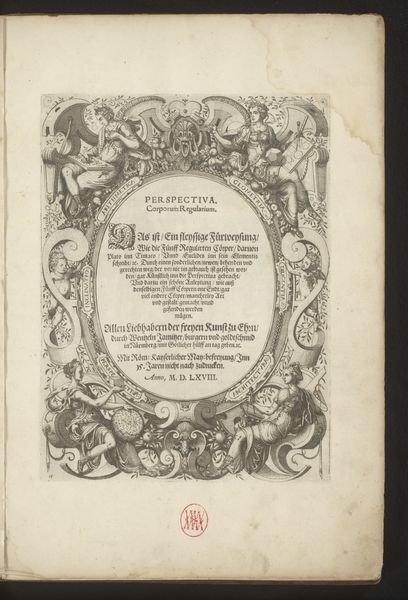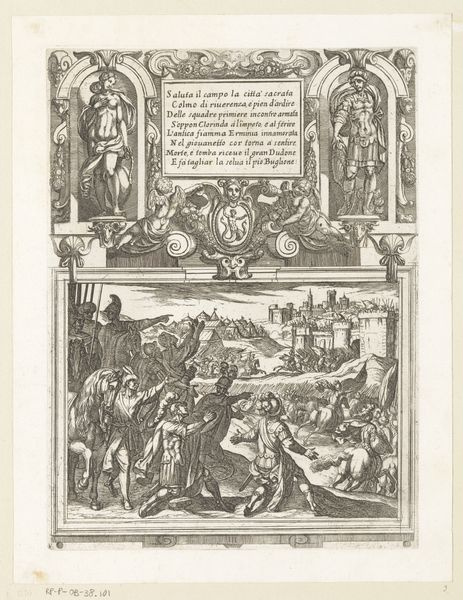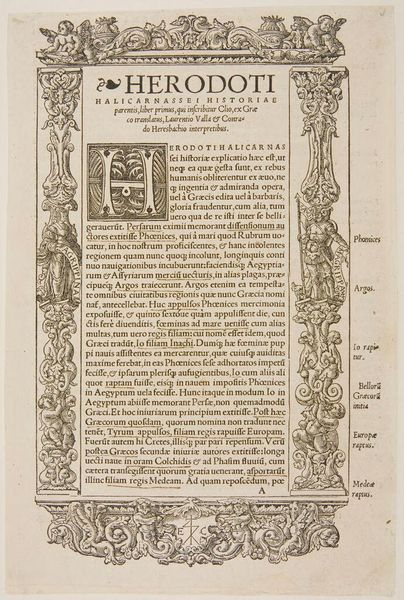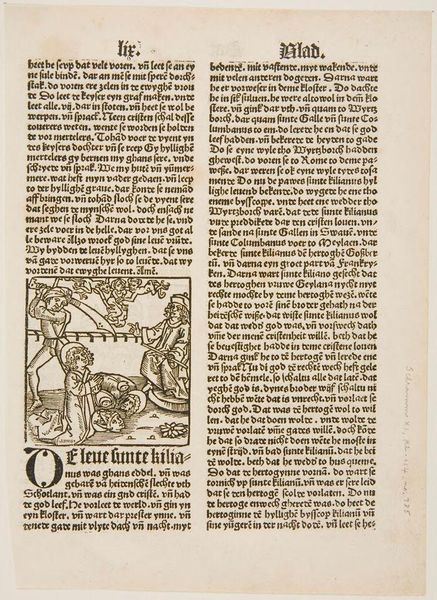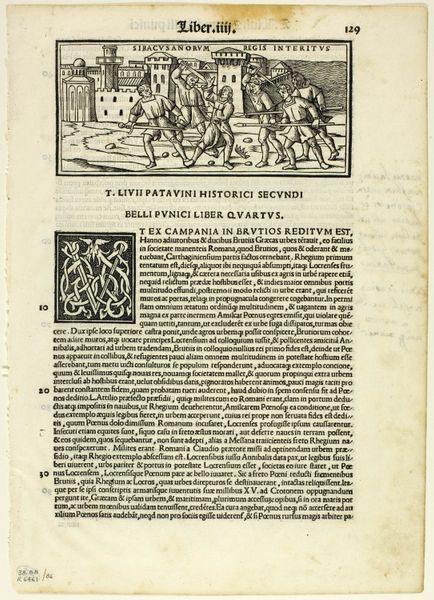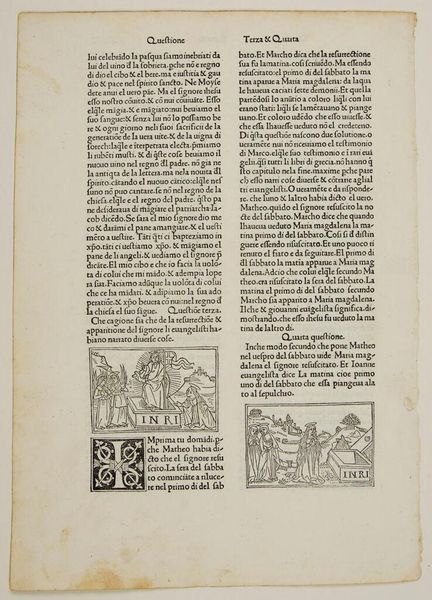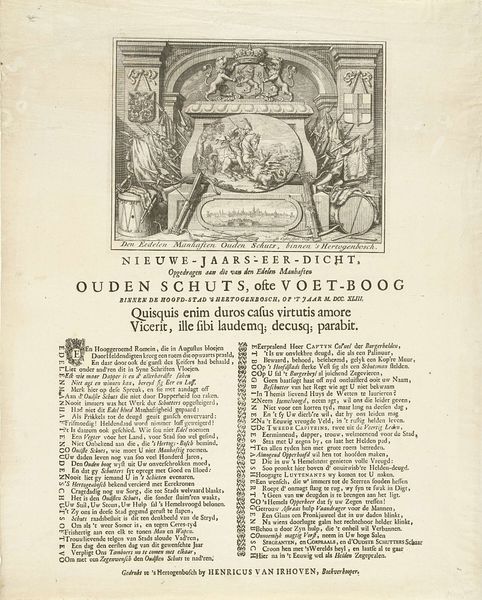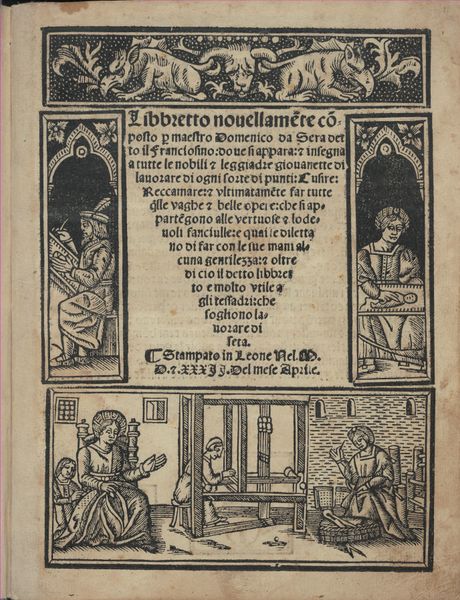
The Taking of Jericho from Catholische Bibell, plate ten from Woodcuts from Books of the XVI Century c. 1564 - 1937
0:00
0:00
Dimensions: 115 × 155 mm (image); 323 × 205 mm (image/te×t); 383 × 233 mm (sheet)
Copyright: Public Domain
Curator: We’re standing in front of "The Taking of Jericho from Catholische Bibell, plate ten from Woodcuts from Books of the XVI Century" created by Virgilius Solis the Elder. It’s a woodcut on paper, dating from around 1564 but printed later, around 1937. Editor: My first impression is how busy it is. So many figures crammed into that small pictorial space. The detail is incredible for a woodcut. Curator: Absolutely, the density speaks to the social and religious fervor of the time. Look at the depiction of Joshua leading the Israelites. This wasn't just about military conquest, it was a divinely sanctioned act. Consider how the role of religious identity played into these events. Editor: It's intriguing how the labor is presented. Notice the careful crafting of each figure, each brick in the walls of Jericho. This is painstaking work! You can almost feel the artist's hand, the sheer effort of cutting the wood block. Curator: And observe how Solis presents the city of Jericho, a highly charged space, especially at this point of history. The text surrounding the central image frames the action within a larger religious and cultural context, too. This is an artistic attempt to legitimize religious violence. Editor: The materiality, that stark black ink on paper, it gives the scene an undeniable weight. It forces the viewer to confront the implications of this story of siege and destruction, and perhaps question their assumptions. What was it like to live under such religious influence? Curator: I agree, this piece definitely holds space for discourse. Looking at how Solis portrays this infamous historical event, we can analyze the nuances of power, faith, and violence of the time and how they relate to contemporary perspectives. Editor: Thinking about the labor involved, I'm left considering the impact that these easily reproducible woodcuts would have had on the distribution of these ideas. Cheap, but so influential! Curator: Reflecting upon the intersection between belief and execution—both artistically and literally—illuminates such historical perspectives. Editor: Absolutely, engaging with its production and societal elements really does highlight an artwork's layered narratives.
Comments
No comments
Be the first to comment and join the conversation on the ultimate creative platform.
